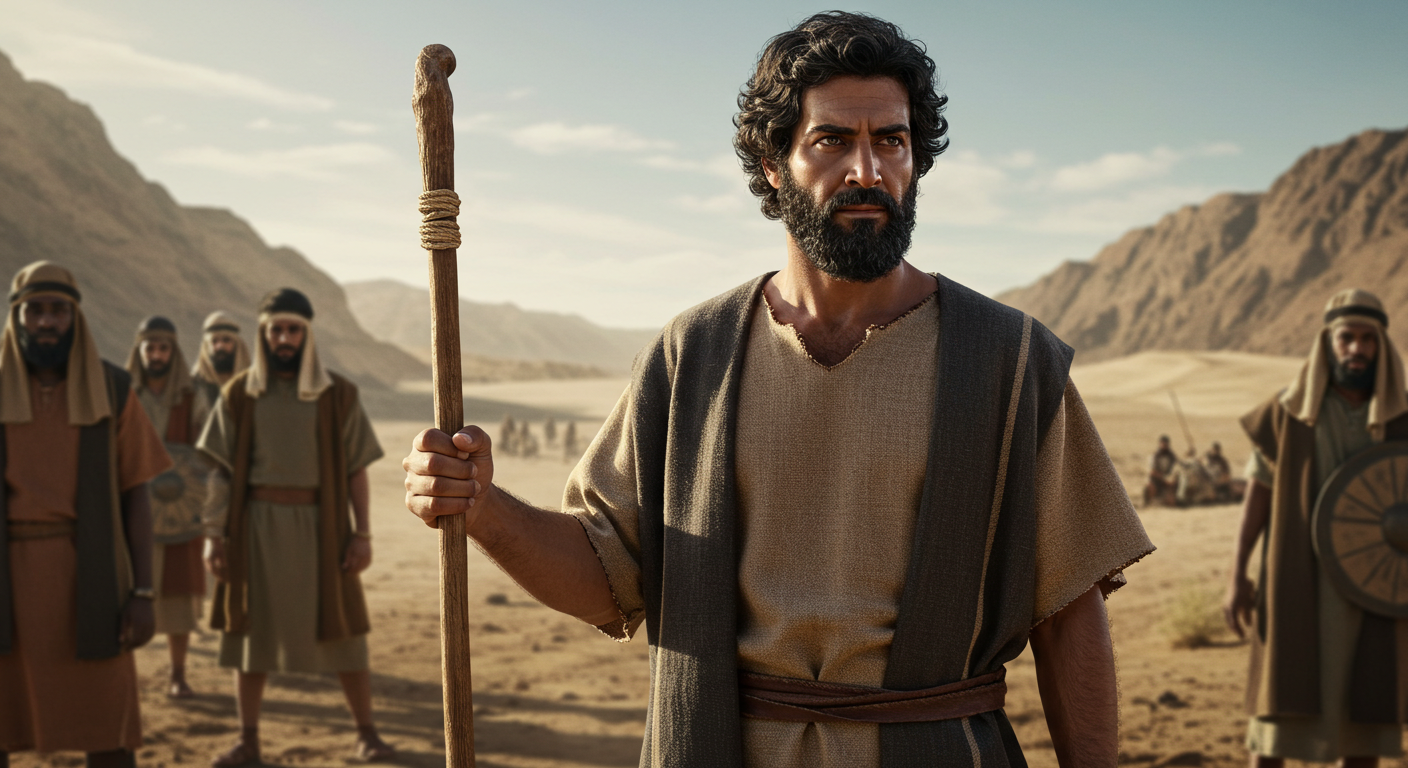Delve into Nahshon’s significant role in the lineage leading to Jesus—an exploration of faith, leadership, and legacy connecting ancient narratives to today’s world.
Exploring Nahshon’s Legacy in the Lineage of Matthew
Imagine standing at the edge of history, peering into the annals of an ancient narrative that has intricately woven itself through the lives of countless generations. Such is the captivating allure of Nahshon, a figure whose mention in the biblical canon places him at an intriguing intersection of faith, leadership, and legacy. While Nahshon may not be a household name to many, his role in the biblical narrative is both significant and potent, serving as a marker of faith and continuity in the lineage leading to Jesus as recorded in Matthew 1:4. Positioned as a bridge between the period of the Israelite exodus and the advent of the New Testament, Nahshon’s life and lineage hold deep insights for us, waiting to be unfurled.

Nahshon’s Story in the Bible
Nahshon first emerges in the biblical narrative during the Israelites’ exodus from Egypt. He is noted as a leader of the tribe of Judah during the wilderness wanderings, a time characterized by both miraculous deliverance and arduous trials. Nahshon’s standing among the Israelites is affirmed by his leadership role, reflecting a combination of trust and accountability bestowed upon him by divine providence and the collective acknowledgment of his peers. In Numbers 1:7, Nahshon is listed as the son of Amminadab, capturing his lineage and connection to Judah, the tribe prophesied to carry the line of kingship.
As the Israelites encamped around the Tabernacle, Nahshon was positioned at the helm of his tribe, reinforcing the significance of his duty. The ensuing chapters of the Torah reinforce Nahshon’s pivot from being merely a name to a symbol of leadership and faith. According to rabbinic traditions outside of the biblical text, Nahshon is attributed with the act of courageously walking into the Red Sea before it parted, demonstrating unwavering faith in divine deliverance. This metaphor of stepping boldly into uncertainty permeates his story, laying the groundwork for his role in the grand tapestry of lineage that leads to King David and eventually to Jesus.
Lessons from Nahshon’s Life
In the quiet resonances of Nahshon’s life, we find multiple lessons that echo through time. Firstly, Nahshon’s story underlines the importance of leadership grounded in faith. He stands not in the forefront of battles nor in the crux of prophetic declarations but as a steady figure leading his tribe through the wilderness and towards the promise. This exemplifies a model of leadership that is less about visibility and more about integrity and faithfulness in one’s calling.
Secondly, the lesson of courage emerges vividly from Nahshon’s presumed act of faith at the Red Sea. Whether historically verified or not, this narrative bequeaths a profound message: stepping forth in faith can create pathways where none seem apparent. In a world fraught with uncertainty, this act of relying on divine providence before there is visible assurance becomes a touchstone of faith.
Lastly, Nahshon’s connection to Jesus through the genealogical line highlights the impact of legacy. It serves as a reminder that the fruits of one’s actions, convictions, and contributions often extend far beyond their lifetime, influencing countless lives to come.

Connection to Today’s World
In today’s world, Nahshon’s quiet yet pivotal role can be seen through the lens of contemporary leadership challenges. In a society that often equates leadership with charisma and visibility, Nahshon’s story reminds us that the most profound leadership often occurs behind the scenes—through faithfulness, consistency, and integrity. In a world where the scramble for authority can sometimes eclipse moral and spiritual foundations, Nahshon’s character invites us to redefine what true leadership looks like in the varied spheres of influence we occupy.
Furthermore, Nahshon’s legacy becomes a beacon for those navigating seasons of uncertainty. His archetypical immersion into the sea, an act of faith preceding a tangible miracle, mirrors the kind of faith required in today’s unpredictable world. Whether you’re leading a community, nurturing a family, or merely seeking purpose, his narrative encourages reliance on unseen assurances beyond the immediate horizon.
Key Bible Verse
A verse that captures the essence of Nahshon’s legacy is found in Matthew 1:4: “Ram the father of Amminadab, Amminadab the father of Nahshon, Nahshon the father of Salmon.” Though brief, this genealogy links Nahshon directly to the lineage of David, and ultimately to Jesus. This verse signifies the continuation of divine promise and the profound impact of genealogies and legacies in scripture. It serves as a testament to the faithfulness of God’s promises, threading through generations.
Thought-Provoking Question
In reflecting on Nahshon’s story, consider this: What leap of faith might you be avoiding, and how could stepping forward in trust influence not only your life but the lives of those who come after you? Nahshon’s example prompts us to examine the narratives we are willing to embrace and the legacies we choose to leave behind.







